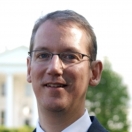
Last week, I wrote about my attendance at the PEPFAR annual meeting in South Africa, the country that has more people living with HIV (over 5 million) than any other country in the world. After this meeting, I visited the neighboring country of Swaziland, which has the unwelcome distinction of having the highest HIV and TB prevalence rates in the world.
This part of my trip had special personal significance for me. Twenty-one years ago, I had the privilege of serving as a United States Peace Corps volunteer in Swaziland, where I worked as a high school science teacher. This trip really was part homecoming as Swaziland remains a part of me, and it gave me a chance to reconnect with many friends whom I haven’t seen in more than a decade. But, I also spent several days with the PEPFAR team in the country – especially the Peace Corps - learning about the broad range of ways that the United States government is extending a hand of friendship and is partnering with Swaziland to respond to their HIV epidemic.
The United States Ambassador to Swaziland, the Honorable Earl Irving, was an incredible host. I attended a large reception at the Ambassador’s residence with the Honorable Minister of Health, Benedict Xaba and other Swazi leaders working on HIV, as well as representatives from PEPFAR, Peace Corps, CDC, USAID, DoD, and private American institutions, including Columbia University’s International Center for AIDS Care and Treatment Programs (ICAP) project. Another evening, the Ambassador hosted a dinner with leaders from the Swazi Cabinet, the Ministry of Health and the national AIDS commission. I participated in a handover ceremony where the Ambassador ceremoniously transferred nine vehicles from PEPFAR to the government of Swaziland that will support their HIV work in the field. Through this event I also had the opportunity to meet His Excellency the Right Honorable Prime Minister of Swaziland.
A major focus of PEPFAR’s work is to assist the Swazi government’s plan to scale up adult male circumcision. This lowers the risk that men will acquire HIV infection and research models indicate that if the country can get up to 80% of its adult men circumcised, they could observe a substantial decline in HIV transmission. I visited one of several mobile sites that enabled Swaziland and PEPFAR to quickly expand access to circumcision. I visited a rural clinic where PEPFAR is working to train and support nurses so that they can initiate people on antiretroviral therapy, a step that will help expand access to therapy in the country. I also had the opportunity to meet with many current Peace Corps volunteers, most of whom are assigned to HIV prevention and education and are doing great work in very rural communities to support community level efforts to educate about HIV, promote HIV testing and access to care, and support people living with HIV. In fact, it was with a Peace Corps volunteer that I met a most impressive woman who is an outspoken peer educator and advocate. Despite very strong stigma facing people living with HIV, everyone in her community knows her status and she is doing important work to support other people living with HIV and bring people into care.
One of the truisms I see as I reflect on the work on the ground in Swaziland is how similar are the challenges in the United States. We have made enormous progress in responding to the epidemic at home, but we still struggle with access to prevention and care services, we must still do more to decrease stigma and discrimination, and as in Swaziland, the engagement and leadership of people living with HIV is a core ingredient of a successful response.
Despite the overwhelming scope of the epidemic in Swaziland, I left feeling encouraged. There is strong leadership by senior government officials; the Ministry of Health estimates the country has achieved roughly 70% coverage on antiretroviral therapy for people for whom this is clinically indicated—which is very respectable progress. I also met a broad range of skilled and committed Americans with critical expertise who are doing really important work to foster partnerships with Swazis and collaborate on a range of prevention and care issues. I also left with a memory of going back to Nsongweni High School where I was a science teacher so many years ago. They welcomed me back in grand style with a program of traditional dancers and a choir and I was given an opportunity to address the students and meet with the headmistress (my former colleague) and the teachers. I love that community and that tiny country on the other side of the world, and I am proud that the United States is actively engaged in their fight against HIV/AIDS.
Jeffrey S. Crowley is the Director of the Office of National AIDS Policy


